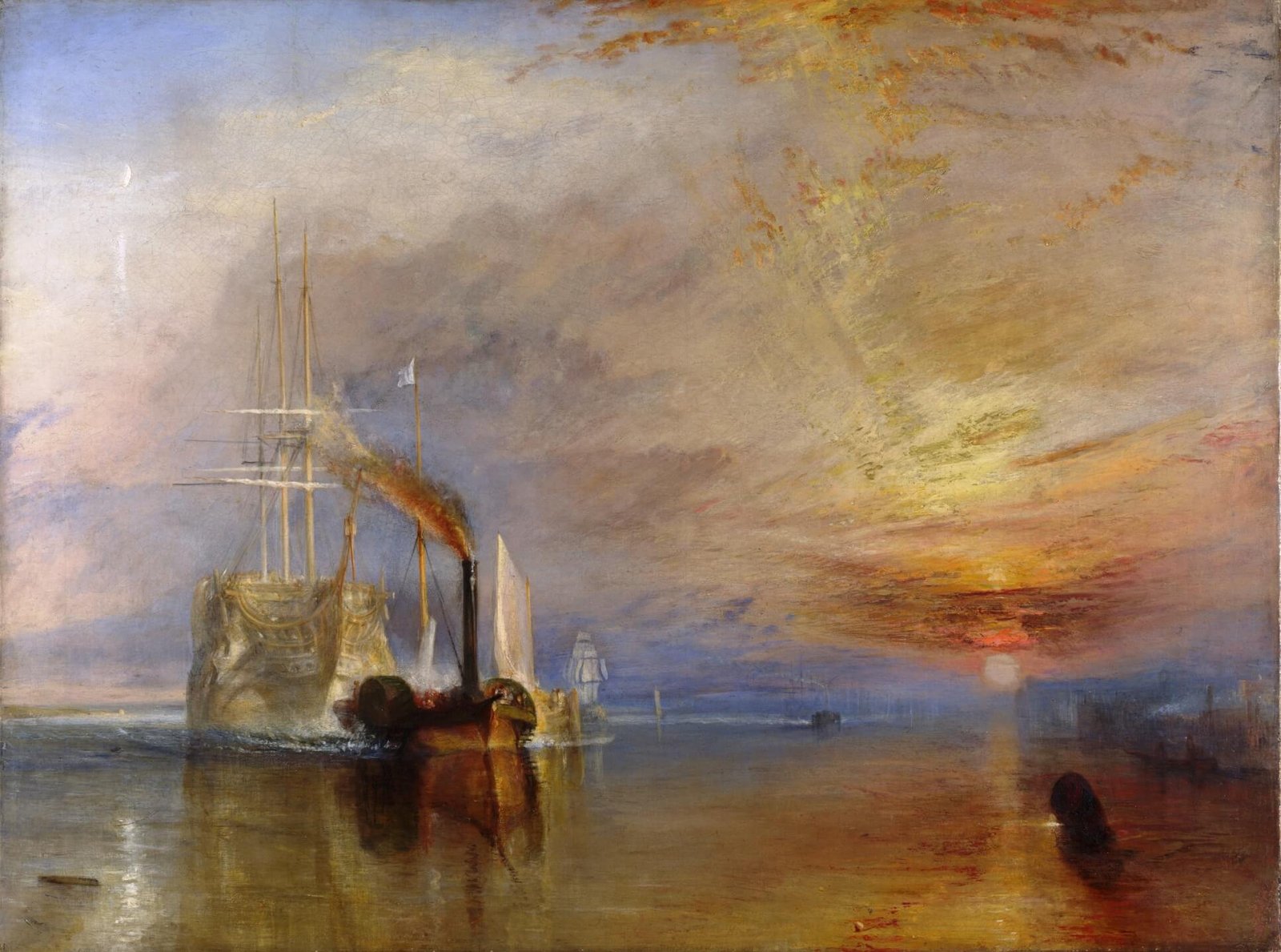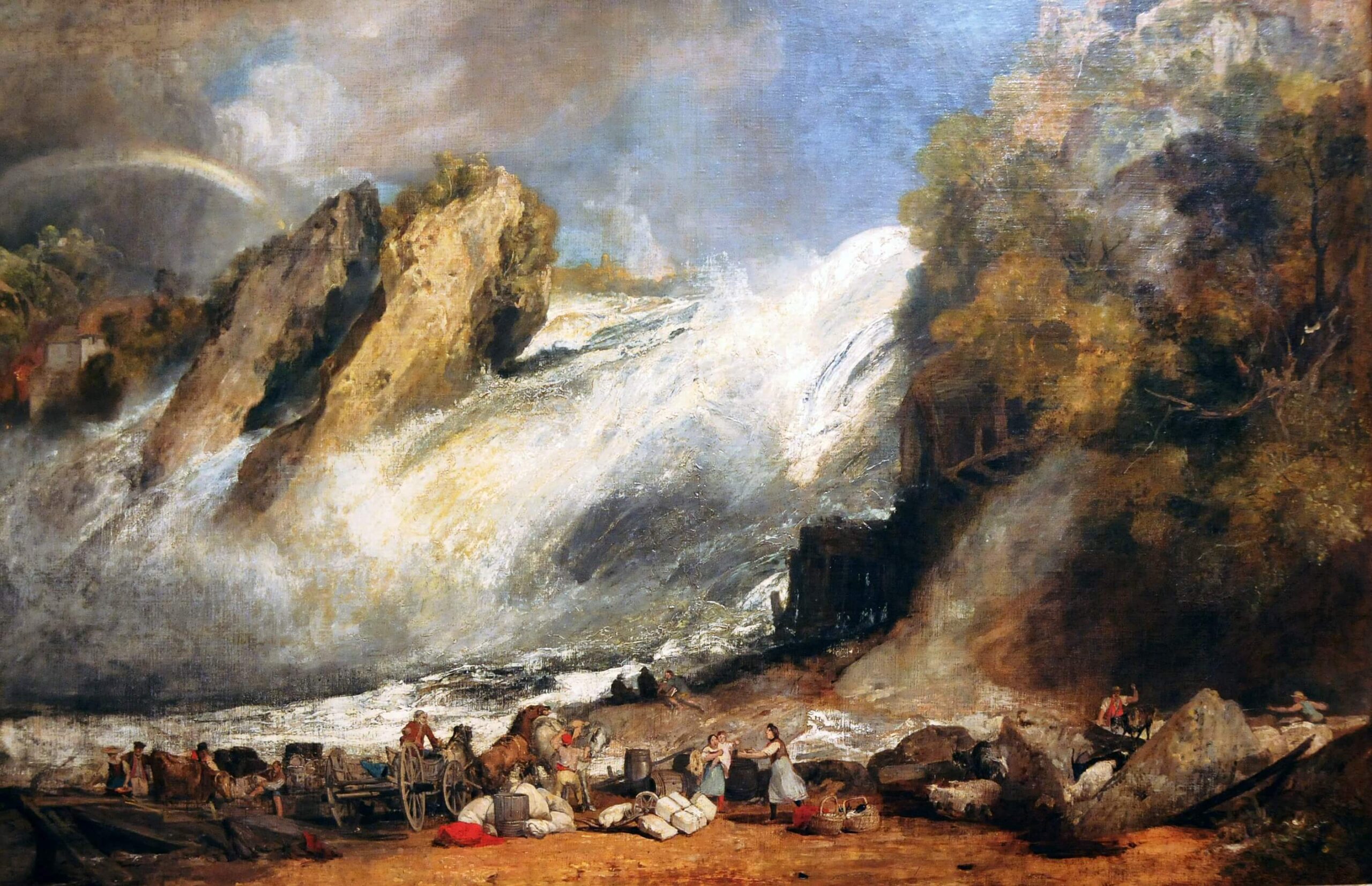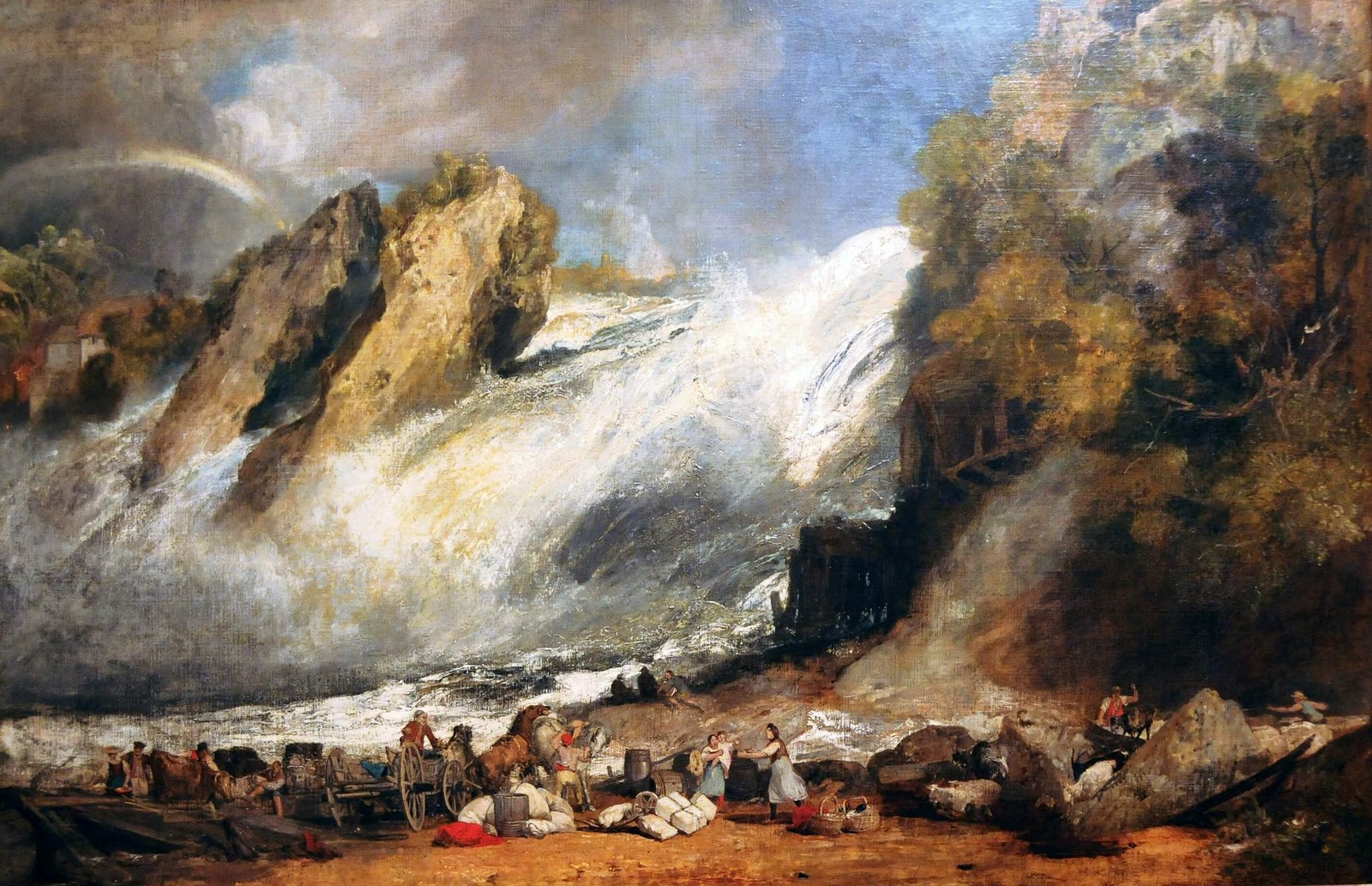
If you enjoy the works of J.M.W. Turner (as I do) and want to know more about him, I suggest reading Franny Moyle’s Turner: The Extraordinary Life & Momentous Times of J.M.W. Turner (New York: Penguin Press, 2016). It’s a detailed and comprehensive book about Turner’s life, art, personality, and career. This post is about some of the things I learned from the book.
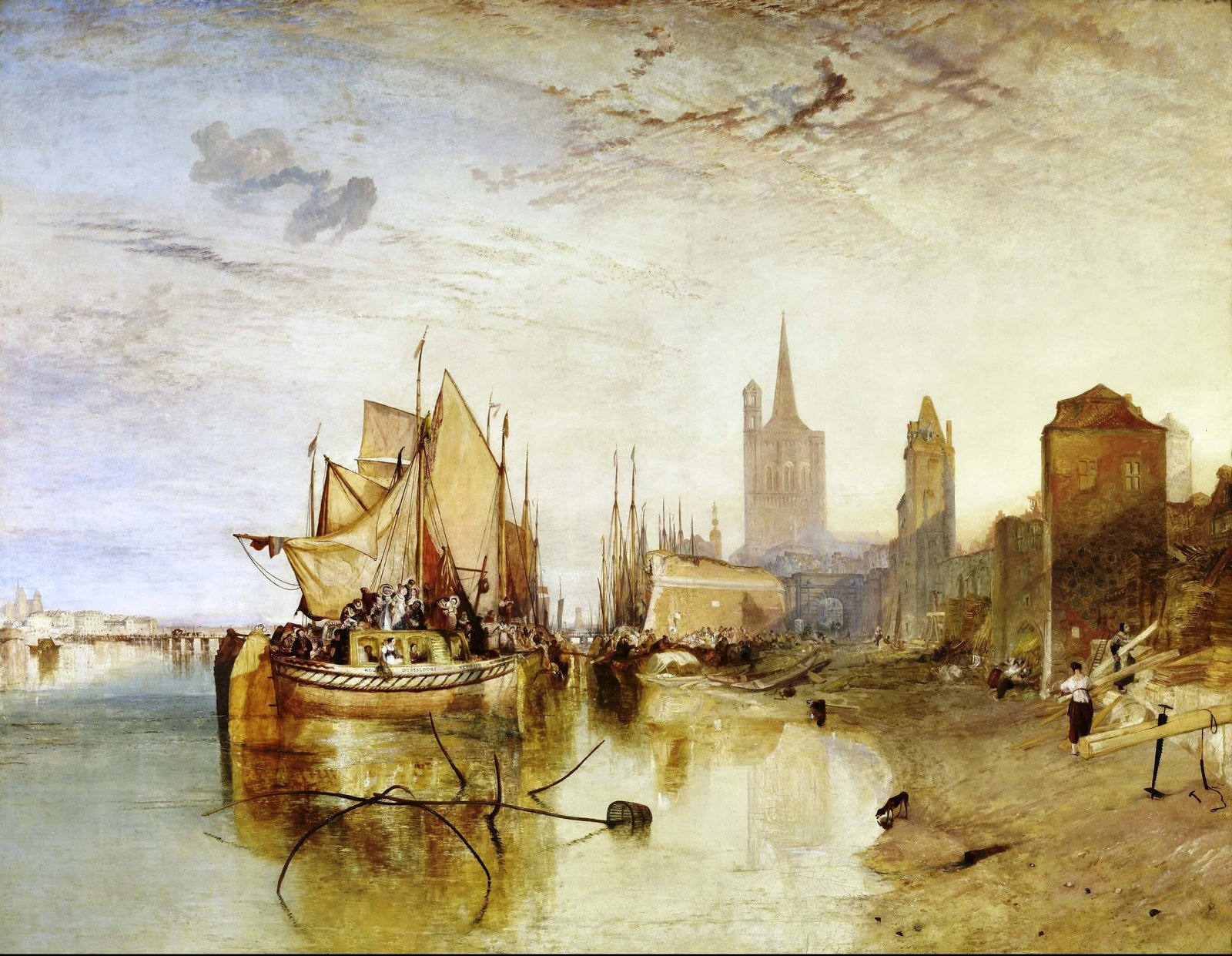
It seems that Turner was a complicated character. He was completely devoted to his art, pretty much to the exclusion of all else, including his family and the women in his life. He was a social butterfly who was heavily involved in the Royal Academy, but he often fell out with former friends and patrons. He was well-travelled, adventurous, and a savvy businessman. He journeyed all across England and continental Europe, often with little regard for safety and comfort, to sketch the scenery. He took on as many watercolor and oil painting commissions as he could possibly fit in, and he also completed lots of commissions for publishers’ print collections of landscape views. He even ran his own gallery so that he could exhibit and sell his works the way that he wanted to. It doesn’t sound like Turner played by anybody’s rules except his own, and he never let a business opportunity pass him by.
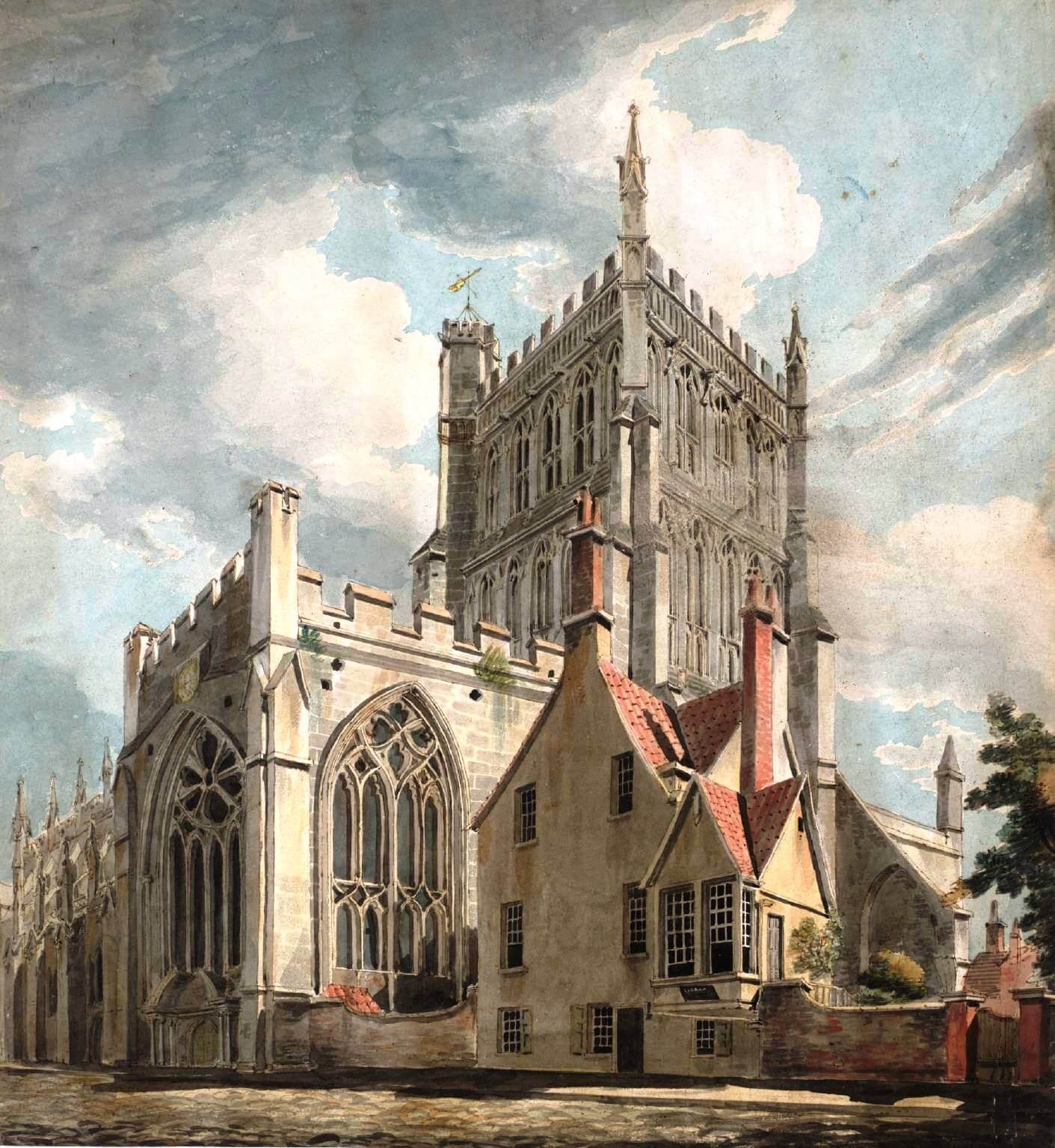
It’s pretty common knowledge that Turner’s later works wasn’t well received by his contemporaries. He was a bit too experimental for the artistic climate of the day. That’s why it surprised me to learn that he started his career as a topographical landscape artist, and he was celebrated for his detailed and accurate views. In these early days, he was pretty much universally loved and hailed as a prodigy. But he quickly began to experiment, and that’s when his work became polarizing. He started to blur the lines between watercolors and oils, sketches and finished paintings. He also began to care more about atmospheric effects than solid, and he started to use some shockingly bright colors. Of course, that’s what we know and love best about his works today, but lots of people thought he was crazy at the time. In fact, as he aged and experimented more, many people truly believed that he had gone insane. To his credit, he didn’t change his style to make them happy. Like I said, he played by his own rules. It many ways, I feel like Turner was a sort of proto-Impressionist, and we all know that the art world wasn’t ready for the Impressionists, either. It’s interesting, though, that almost all members of the British art world held Turner consistently in very high esteem, despite not being fans of a significant portion of his work.
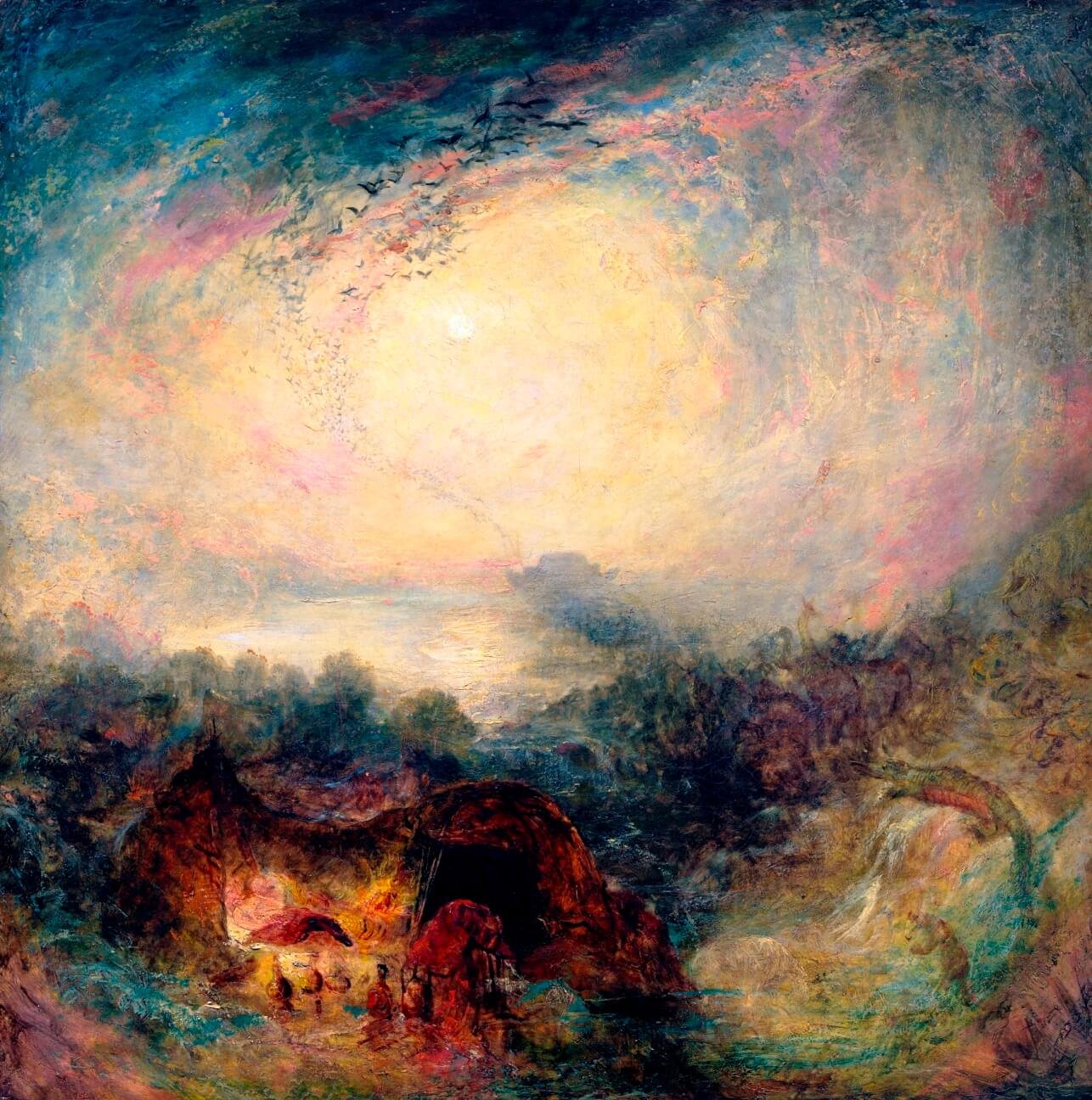
I’m a big fan of Turner’s work, but I can understand why his contemporaries were so perplexed by it. His paintings are beautiful, but many of them aren’t landscapes in the traditional sense. You can almost get a sense of disorientation looking at his works – as though you’re in a dream. I noticed this quite strongly when I visited the big Turner show at the Frick a few years ago. It was a rare opportunity (at least rare in the U.S.) to view lots of large Turner paintings together and up close. It was really fascinating to see how details like people, trees, and ships appear and disappear from different distances and viewpoints. It was really an otherworldly experience. Next time I have the chance to see Turner’s works up close, I’ll really appreciate knowing so much more about the person who created them.
